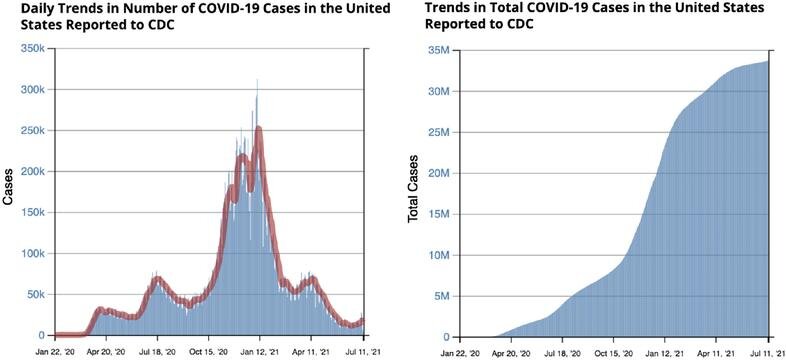A University of Toronto Scarborough study finds that showing COVID-19 data in a certain way can influence how seriously people view the pandemic, which in turn can affect behaviour.
The study looked at two commonly used types of data: stock (the total case counts since the pandemic started) and flow (the number of new daily cases). Researchers found that people viewed the pandemic as riskier – and more deserving of caution – when they were shown total case counts.
“Even a subtle difference in which data are shown can impact how risky people view the pandemic,” says Sam Maglio, associate professor in the department of management and co-author of the study.
To test the effect, participants were shown either total case counts since the pandemic began or new daily cases. They were then asked to rate the current level of risk associated with the pandemic and how it would affect their behavior, such as willingness to dine in restaurants or wear masks.
Maglio says that since flows can vary but stock is an ever-increasing number, seeing the stock count makes people view the pandemic as more serious, which makes them less willing to engage in risky behaviour.
“When you see a number that keeps rising, it goes without saying that it grabs your attention and makes you think about your own risk of infection,” he says.
It is that consistent increase that makes stock numbers of COVID cases so compelling to people, he adds.
Maglio says the findings suggest showing total case counts causes people to view the pandemic as serious and to be vigilant, but continuously doing so may be disingenuous. For example, if total case counts are shown while daily case counts remain consistently low, the data isn’t painting a complete picture of the current state of the pandemic.
“If you’re only shown the total case counts, you’re not sensitive to the rate at which it’s fluctuating either up or down,” he says.
At the same time, when people are presented with high numbers (in the millions for COVID-19 cases), Maglio says the data can become abstract.
“If you repeatedly flash a number that’s in the millions, many people may not know what to do with it; they might be desensitized to it,” says Maglio.
So what do the findings, published in a COVID-19 edition of the Journal of Experimental Psychology: Applied, mean for those communicating data to the public?
For one, it shows how small, subtle interventions can change behaviour – and that greater care needs to be taken when presenting data. Maglio says not considering how a message will be interpreted is careless and does a disservice to audiences.
There is also no neutral way to present data. Whether it’s visualizing data or communicating science to a wider audience, those presenting the information are making decisions on what to show, which can affect how the audience interprets the message.
“It’s important to be transparent with data,” he says. “If you’re only showing one side of the data, maybe direct your audience to where they can get all the data, or at the very least, [provide] some guidance on what’s missing.”
https://medicalxpress.com/news/2022-03-covid-behavior-pandemic.html


